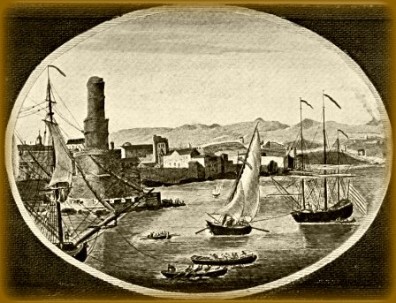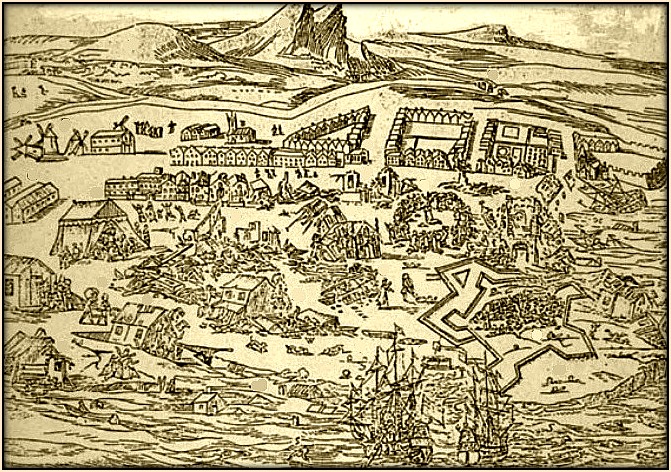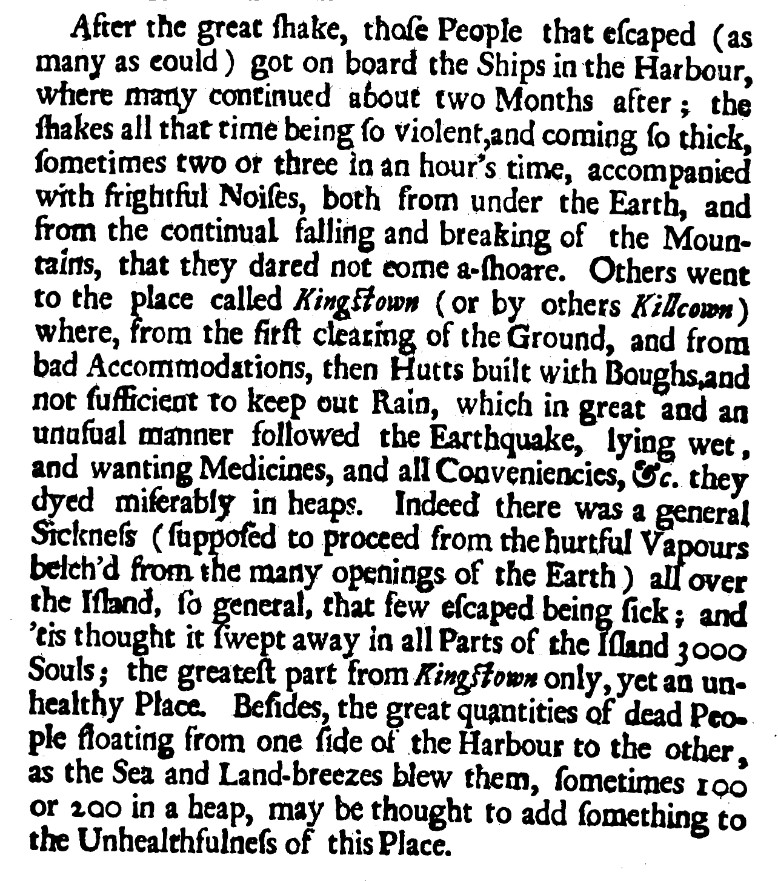from port royal - 1692




After this fatality many of the inhabitants, who had survived the loss of Port Royal, removed to that part of Liguanea where Kingston now stands. Here they took refuge in miserable huts, which could not defend them from the rain. Thus destitute of suitable conveniences and medicines, they soon perished with malignant fevers. The air, empoisoned with noxious vapours, cooperating with the terror of these calamities, and the distress they occasioned, brought on a general sickness, which very few escaped in any part of the island. Not less than three thousand are computed to have died; the greater part at Kingston only, where five hundred graves were dug in a month's time, and two or three buried in a grave. What rendered the scene more tragical were the numbers of dead bodies which, after perishing in the shock at Port Royal, were seen in hundreds floating from one side of the harbour to the other.
History of Jamaica, Edward Long, 1774

'part of a Letter from a Gentleman in Jamaica to his Friend in London, Dated July 3d. 1693'
Philosophical Transactions of the Royal Society, vol xviii
I am very intrigued by the alternative name for Kingstown given here - Killcown hardly seems to be a real word or real name of a place, but could possibly be a 17th century version of Killcowan which is today one way of spelling the name of a place in Ireland. That place had featured in some way in the uncovering of a 'Popish Plot' some years before 1692; were there people who used the name for the new settlement on the Liguanea plain because of an opinion about that plot? I will try to get some further thoughts on this from those who are more expert on 17th century Jamaica than I am.
a late 18th century view:
A view of universal history, from the creation to the present time ...
By the Rev John Adams, 1795
'They again rebuilt the city; but, ten years after it was destroyed by a great fire. The extraordinary convenience of the harbour tempted them to build it once more; and once more it was laid in rubbish by a hurricane, the most terrible on record. Such repeated calamities seemed to mark out this place as a devoted spot; the inhabitants therefore resolved to forsake it for ever, and to reside at the opposite bay where they built Kingston, which is lately become the capital of the island. [Only 1754-5.]
Kingston consists of upwards of one thousand houses, of which many are handsomely built, and in the taste of these islands as well as the neighbouring continent. They are one story high, with porticoes, and every conveniency for a comfortable habitation in that climate.'

